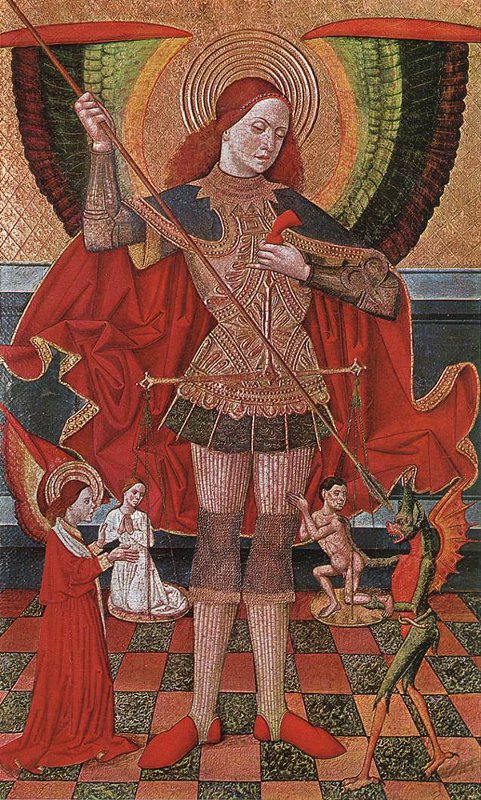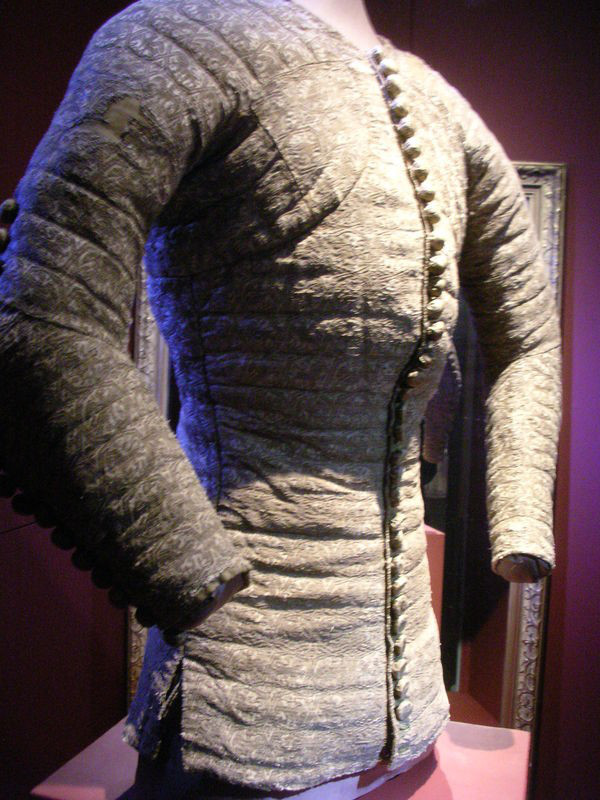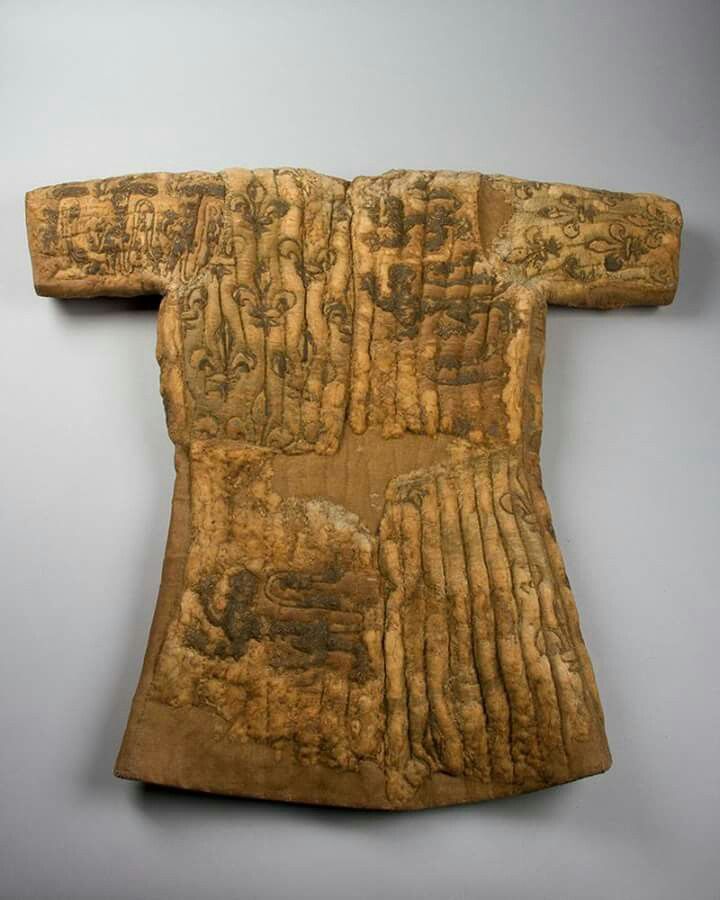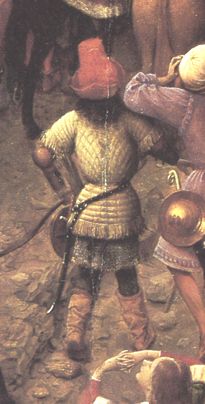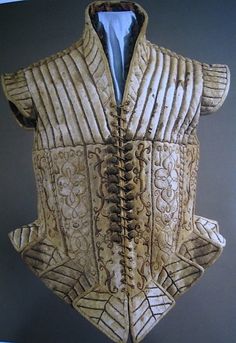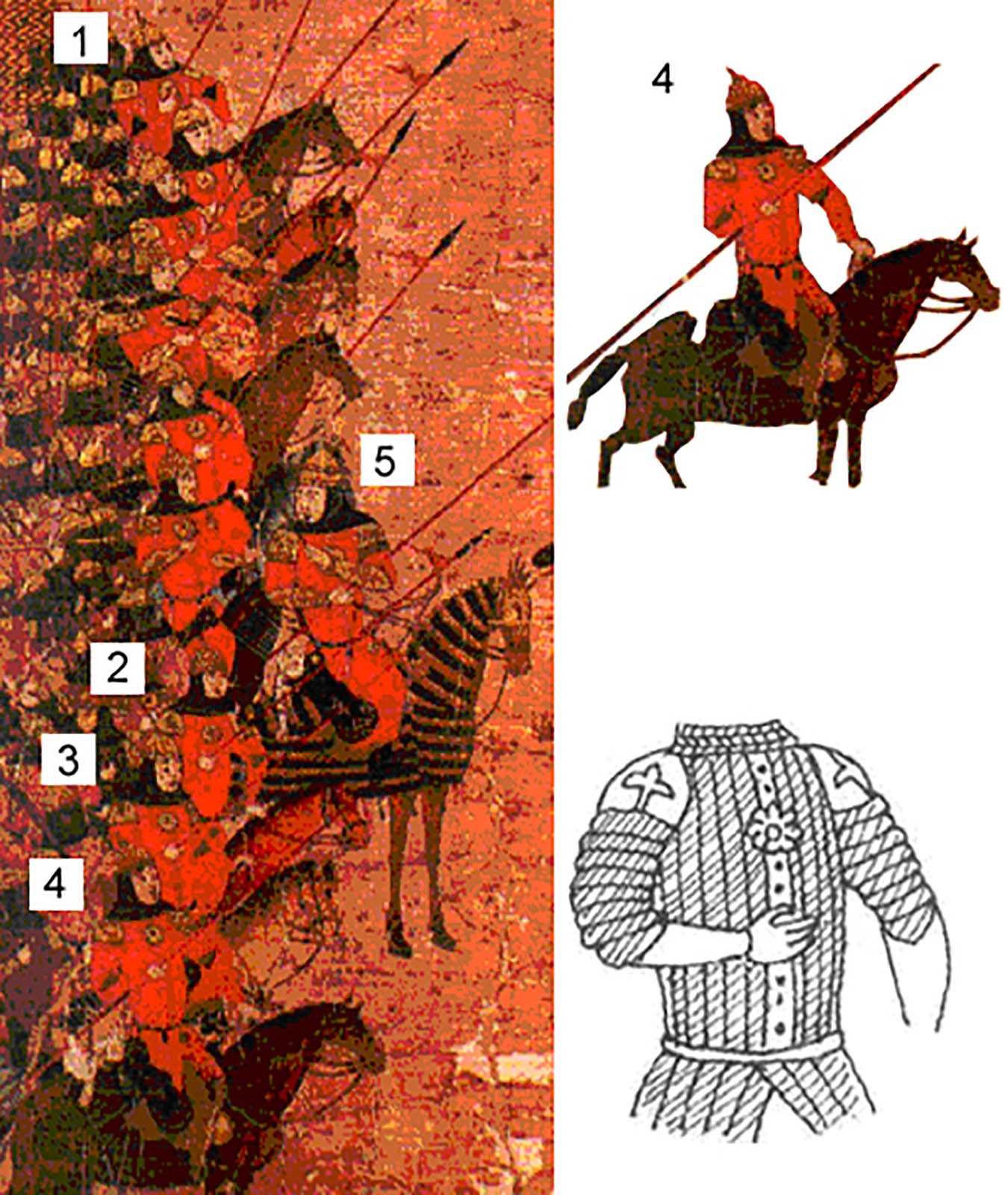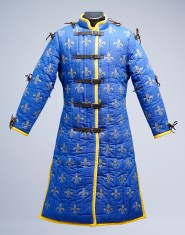A propos Armures gambisonnées
Section “Padded armor” offers you a great variety of stuffed body protection, which will additionally protect you during medieval combat or fencing.
There are 7 categories in this section:
- Padded liners and caps. Stuffed head protection for different types of helmets (liners), padded coifs and arming caps, with or without pelerine.
- Gambeson. Various models of the most popular medieval underarmor such as aketons, doublets and padded jacks. Here is also represented women’s gambesons, leather LARP gambesons and sleeveless stuffed vests.
- Padded pelerines and aventails. Quilted accessories, which protect chin, neck and upper part of chest during the battle.
- Padded gloves and mittens. Two and three-fingered medieval hand armor, mittens with full covering of fingers. Also, gladiator padded arm protection is presented.
- Padded chausses. Medieval leg underarmor, which is used with mail or plate armor, as well as a separate one. With or without sole, knee pads for plate caps, accessories for chausses.
- Padded armor sets. We combined the most popular models of our padded underarmor into sets of two and three pieces so you can buy it in one click.
- Ready padded armor. Different models of our padded underarmor in perfect condition and ready to ship immediately after purchase. Goods in this section are new and were used for photo-shoots only.
For the manufacture of each item from any section, we use personal measurements and requirements of customers. That means that you will get absolutely unique handcrafted armor.
Materials, which we use for sewing:
- Linen
- Cotton
- Wool
- Velvet
- Silk
- Leather
- Jacquard
We stuff our goods with natural sheet wadding (50% of cotton and 50% of wool).
Depending on the item, you may choose different options, eg. decoration of the bottom edge, fastening and sleeve attachment for gambesons, leather inset for gloves, foot strap for chausses, etc.
We are always open to new ideas! So, if you did not find a model that stroke to your heart, please contact us via [email protected] or social networks and send description/photo of padded armor of your dreams and we will make it come true:)
Padded armor or stitch after stich
History of padded armor begins long before Current Era. In fact, there is one of the earliest protecting outfits, after leather and twig, as it was much easier to sew a few layers of fabric or leather, than hammer out, cast, braid or rivet metal.
Even in Europe, padded armor as we know it, was in use since at least the X century, though there are factors to suggest that it existed even earlier.
To the point, all padded armor may be divided into three types:
- Independent padded cloth armor, from the earliest representatives to the medieval models and modern protecting cuirasses for fencing sport and kendo.
- Padded under armor, which protects as against enemy, so against own armor, defending from the injuries, which plate armor, mail or brigandine protection could deliver to the sensitive human skin.
- Padded upper armor, which protects as a warrior, so his main armor.
Gambesons and aketons are the most prominent and popular representatives of the padded body armor, which may take place in all three mentioned types. They started their journey in the X-XI centuries and finished in the XIV century. Read more about them in the description of category “Gambesons”, however there are some models before and after them, which deserve attention.
***
Let’s start from linothorax – ancient Greek body armour, which had a look of multi-layered cuirass of linen fabric, reinforced with metal sheet around the waist. Historians suggest its usage starting the Mycenaean period (from the XVI to the XI century B.C.) and until the III century A.D.
It was widespread on the entire territory of the ancient world, and became a standard hoplites armor from the end of the VI century B.C.
Painted depiction of a soldier wearing the linothorax, from an ancient Macedonian tomb of Mieza, Macedonia in Imathia, Greece, 4th century B.C.
Also, Etruscans used this padded armor, covering it with metal plates.
Mars of Todi, Museo Gregoriano Etrusco
Later, Macedonians, Romans, Celts and other nations borrowed and remodeled such padded cuirasses.
***
In the IV B.C., Scythian warriors worn padded leather jackets and pants. You may see them on the gold Scythian adornments.
***
Historians cannot say for sure whether Scandinavians worn padded armor in the VIII-X centuries. From the one side, the probability of the fact that they were wearing mails on the bare body is almost equal to zero. From the other side, it is quite possible that they settled with a shirt and leather jacket, being worn under the mail. Unfortunately, there are no artefacts, which may make clear the fact, if they were wearing padded armor. Also, there are no text evidence; Scandinavian paintings and carvings do not allow to specify, what was worn under the chain mail.
But, there is a different story in the XI century. Thanks to Odo, Bishop of Bayeux, a half-brother of William the Conqueror, until the present day we may admire the Bayeux Tapestry, which had been made shortly after the Norman Conquest.
So, in more recent times, historians define outfit with triangles/diamonds as padded leather armor, whereby a separate metal plate is sewn inside each triangle/diamond.
***
Now, here is a kabadion – Byzantine padded body armor, which had been made of few layers of cotton fabric. There is a body protection of Persian horsemen, which was adapted by Byzantine army in the X century for their horse cavalry. Though some researchers suggest that infantrymen worn thigh-length kabadion of and cavalrymen worn this protection of under-knee-length. Sleeve length varied; long one usually had cuts for more comfortable weapon usage.
I. St. Nestor, Church of Saint Nicholas tou Kasnitzi in Kastoria, about 1180 A.D.
II. Icon, Saint Demetrius, beginning of the 12th century.
III. Codex Græcus Matritensis Ioannis Skyllitzes, National Museum in Madrid, 12/13th century.
***
It is worth mentioning that padded armor is not only body protection. Descriptions, paintings and statues show us many options of using it for protection of head, neck and legs.
Here, you may see padded head and neck protection:
The Morgan Bible, also called the Crusader Bible or Maciejowski Bible
Here is a padded liner of the tournament helmet of the 1484 year:
Kunsthistorisches Museum, Vienna, Austria
Here is padded leg armor – cuisses:
The Morgan Bible, also called the Crusader Bible or Maciejowski Bible
Though, panzerhose protected legs more often than cuisses:
Sainte-Geneviève Library, 1370. Paris, France
The Archangel Michael, 1490, Balselona
You may see panzerhose in The Bavarian National Museum:
Bayerisches Nationalmuseum, Munich, Germany
***
After rule of gambesons and aketons, pourpoint or arming doublet reigned in Europe of the XIV-XVI centuries. Though, poor soldiers still could wear gambeson and jacks as an independent protection: thick padded jackets of 12-30 layers of linen or canvas. Padded upper armor was infrequently accessed protection; combining with plate armor, it was more decorative element with blazons.
However, together with plate armor, padded cloth armor runs into category “under armor” and protects as against foe, so against main armor, being a base for attaching of armor parts at the same time. Mail pieces were sewn on the uncovered places quite often. Such padded body armour could consist of padded layers of fabrics, so have wadding inside.
*It is worth to mention that although majority believes that medieval padded armor was always stuffed with additional materials (bristle or matted wool or linen), it is not so in reality. Actually, most part of the padded protection was made of fabric layers, padded together, without additional elements in between.
***
Pourpoint Charles de Blois (1360-1380 years) is the most popular padded body armor of this period.
Pourpoint of Charles de Blois, Musee des Tissus et des Arts Decoratif, Lyon, France
It has tight form-fitting cut, as non-military doublets of those years had; it is covered with expensive silk and has horizontal stitching. Although, other pieces of padded body armor of those years are not so popular, as this one, they had almost the same cut: difference were just in materials cost and quantity of buttons.
***
Padded upper armor of Edward the Black Prince is another interesting model of that period. It has as short length, so short sleeves. Upper layer is embroidered with blazons and padded vertically.
Arming coat of Edward the Black Prince (1330-76) preserved in Canterbury Cathedral
***
Whereas XIV century made the first step from huge thick gambesons to tight pourpoints, looking like stylish doublets, so the XV century became a golden age of arming doublet.
Considering medieval padded armor of the XV century, we should mention doublet of Malatesta. This typical representative of Italian padded cloth armor has vertical stitching and puffed sleeves, dated by 1472 year.
The doublet/farsetto found in the grave of Pandolfo III Malatesta's
One more arming doublet with similar look:
1435 - 1445 Italian, Museum of fine arts, Budapest, Hungary. Drawing - points for arms, padded skirt.
***
Even padded upper armor of the mid-XV century looks more like fashion clothing, than battle one. For example, here is one of two identical padded upper armor, dated by 1440-1460 years:
Waffenrock, Holstentor Museum, Lübeck
***
Besides survived arming doublets, there are numerous paintings, which allow us to draw conclusions about variety of padded defense of those times:
Jan Van Eyck, Cucifixion,1440 year
Pisanello, 1450–1455 years
St. Florian, Österreich, Oberösterreich, Stiftssammlung, 1480-1490 years
***
The trend continued in the XVI century: padded under armor was identical to civil doublets and jackets, being fully functional elements of main armor at the same time.
Painting by Giovanni Battista Moroni, 1550 year
Fencing Doublet, Leather, silk, linen, cotton, 1580
Fencing Doublet, Leather, silk, linen, cotton, ca. 1580. The Metropolitan Museum of Art
European arming doublet, 1550
***
However, not only knights worn all mentioned-above padded body armor. Infantrymen and archers were wearing jack – multilayered padded body armor, which was previously mentioned.
By contrast with rich and noble knights, who were contriving in their own padded armor and as hard as they can, demands to the jack of common soldiers are written in details in ordonnance and articles of investigational period. So, there are “jack of three cloths of waxed canvas with lining of ten simple canvas” are described in French ordonnance of Charles, Duke of Burgundy. French ordonnance of Louis XI, dated by 1470 year, describes jack in details: “We should say about jacks, that they have to be made of 30 or at least 25 layers of canvas or linen, probably with deerskin as outer layer. Those, which have 30 layers and outer layer of deerskin, will be better and softer clothing. For that purpose, it would be better to make them of four parts. Sleeves must be sewn to the body part well, excluding leather. Holes for fastening of steel parts on the sleeves must be big enough. Holes should be located near of collar, but on the collarbones. High-stand collar must be not too high from the back, leaving space for sallet’s tail. Jack must be buttoned or tied with lacing from the front. Jack must be comfortable and light and be worn over sleeveless pourpoint without collar, made of two-layered fabric. Chausses should be fastened to such pourpoint.”
Chronicler Dominic Mancini describes English infantry, called by Duke of Gloucester and Duke of Buckingham in London 1483 year: “In fact, common soldiers have more comfortable jack, thigh-length and stuffed with cotton wool or other soft fiber. They say, that the softer a jack is, the better they resist swords and arrows blows. Besides, it is lighter in summertime and handier in wintertime.”
You may examine jack on the Memling’s paintings closer. Archers were wearing such model:
Hans Memling St Ursula Shrine c. 1489. Memlingmuseum, Brugge, Belgium
Here is an infantrymen:
Hans Memling St Ursula Shrine c. 1489. Memlingmuseum, Brugge, Belgium
***
And, few words about eastern padded armor, so differ from European protection, but so interesting too.
For example, gazakhand of Arabian writer and commander Usama ibn Munqidh, XII century. Armor consisted of five layers: linen lining, mail of small rings, padded cotton layer, “Frankish mail” of big rings and ornamented outer layer. Button fastened an armor.
Chopcut – padded vest with vertical stitching on a common soldier of Bokharan town militia forces:
Here is various Central Asian padded under-vests and cuirasses:
They are followed by Central Asian, Mongolian and Far-Eastern cuirasses of the XV-XIX centuries:
There is remodeling of Central Asian and Far-Eastern armor:
Iranian paintings of soft Mongolian vests “Khatangu Degel”:
Chinese paintings of soft Mongolian vests:
Nipponese paintings of soft Mongolian vests from «Mongol Invasion” by Nagataka Tosa:
Fragment of an illustration from “Battle between the forces of Persia and Turan” Shahnama, Tabriz 1370 year, the Sarai albums, with draughtsmanship of padded armor:
Tajik padded chapon:
Padded lining of mail, XVI century (probably, Rus, Central Asia or Iran):
Draughtsmanship of tegiliay:
Collection of padded vests from the Turkish museum in Konya, XIII century:
Sudanese padded armor, XIX century:
If you like any of these padded armor, so Steel Mastery is always ready to make custom protection for your!

-0-4-0-1-4-300x400.jpg?v=1746523880)
-0-4-0-1-4-300x400.jpg?v=1746523880)




-0-4-0-1-4-300x400.jpg?v=1746523880)


-0-4-0-1-4-300x400.jpg?v=1746523880)


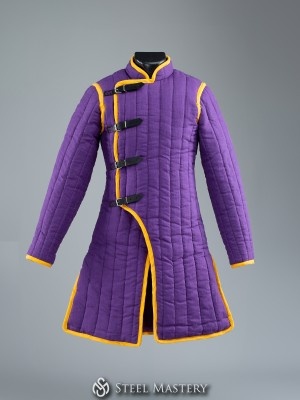



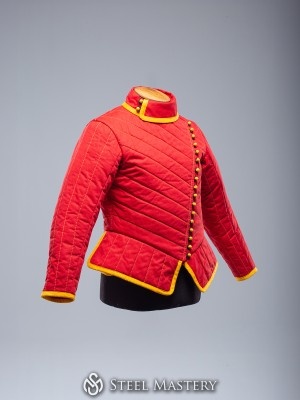
-0-4-0-1-4-300x400.jpg?v=1746523880)











